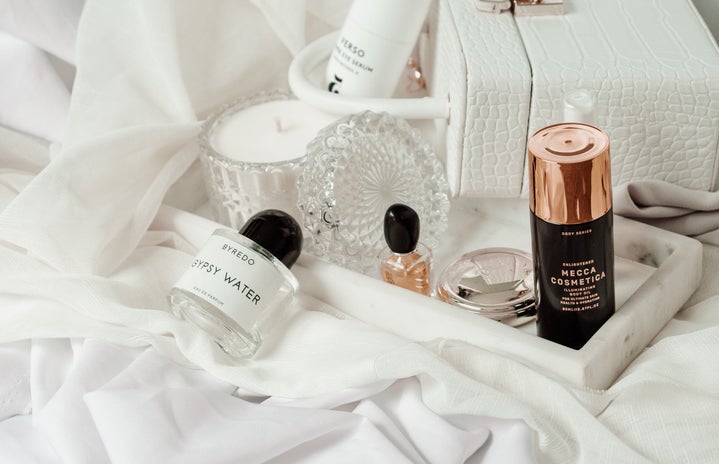People from all across the United States, and even around the world, are drawn to the beauty of Notre Dame’s campus. For those of us who live here, we know that the lakes, the trees, the big grassy areas and Spring-time flowers are seasonal things – reappearing after campus survives the ferocious South Bend winter. But when the snow starts to melt and the sun finally does come out, the ripples of happiness can practically be seen around campus. People – and I dare say even the squirrels – are just happier. After a while though, that joyful reaction begins to fade, we become less excited and more accustomed to the beauty around us. We get used to it. Wouldn’t it be great, though, if our joyful and appreciative feelings could last longer than the first few days of spring? With a little effort, they can.
The effect beauty has on us can feel pretty powerful, and that reaction is not just in our heads. ND Alumna Dr. Margaret Laracy from the Institute of Psychological Sciences has performed research on the surprising psychological benefits of beauty. In a lecture I attended earlier this year entitled “The Healing Power of Beauty,” Dr. Laracy explained, as humans, we’re all drawn to beauty; we’re attracted to beauty in a way unlike any other animal. She said that beauty is a “delight of reason” and has three qualities that we can discover through our intellect. The first is brightness or clarity: beautiful things have a kind of “shine” or radiance about them. The second quality of beauty is harmony, or the right ordering of parts within a whole, like in a well-directed symphony. Finally, the third quality is integrity, the wholeness or sense of completeness in a beauty that offers rest.
From her research, Dr. Laracy discovered that exposure to beauty has significant psychological benefits. Regarding stress, she found exposure to green spaces outside had an inverse relationship to stress levels, and exposure to landscape art reduced both anger and stress in people. Patients with a window over green space also had faster recoveries. Beautiful music has been effective in treating pain and other associated emotions, and engagement with natural, artistic, and moral beauty was shown to increase hope.
The power of beauty lies in its ability to penetrate a person’s mind and heart, gain her interest, and pull her out of herself. Dr. Laracy noted, this can be especially helpful for people with depression and anxiety. Beauty shifts our focus to the positivity outside of ourselves, and can pull us out of anxious or troubling thoughts, towards a more luminous, clear experience.
In today’s world, we are constantly inundated with images and sensory experiences: from social media, our iPhones, advertisements, window displays at the mall – the list goes on. It’s easy for us to become numb to beauty. However, as Dr. Laracy found in her research, opening ourselves up to and cultivating an appreciation for beauty can lower stress levels and help fight negative or anxious thoughts. Notre Dame’s campus is overflowing with beauty, if only we have the eyes for it. This week, this month, this year: I encourage you to seek out the beauty surrounding you. See the big things; see the little things. Appreciate them as if you are seeing them for the first time. Allow the beauty around you to bring you lasting joy and appreciation.
To inspire your own search for beauty, here are some scenes of our campus captured by Carolyn Bates ‘13:
Special thanks to Carolyn Bates for her help with this article, and the beauty she offers the world each day.

